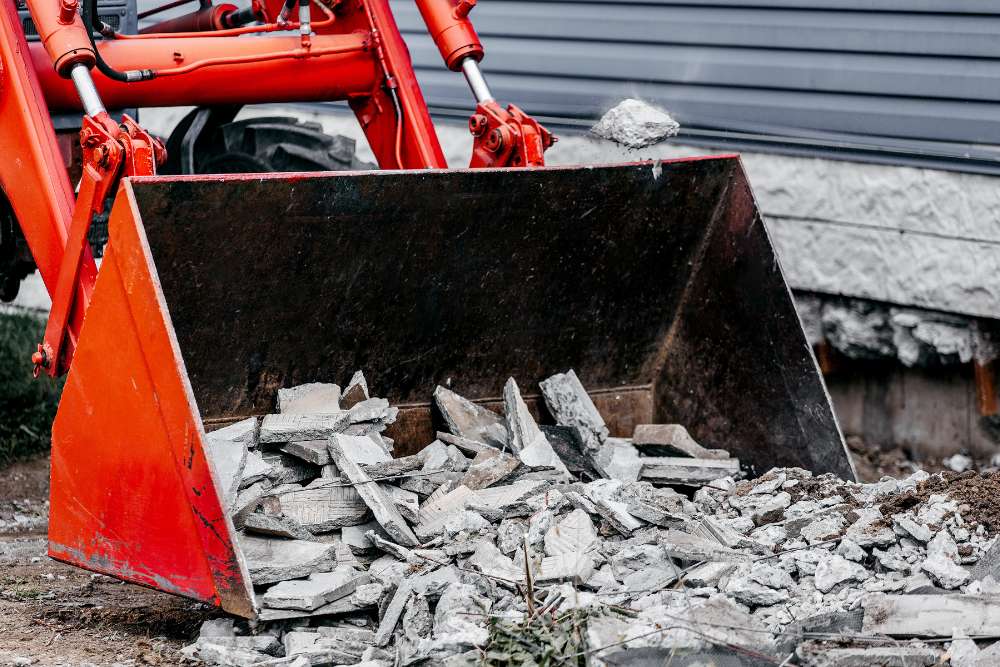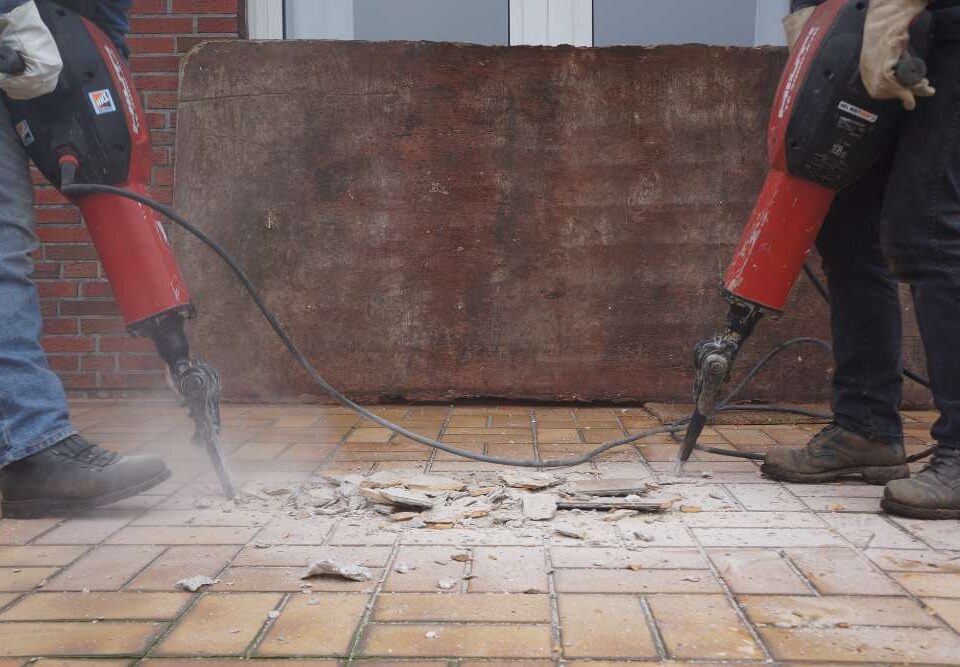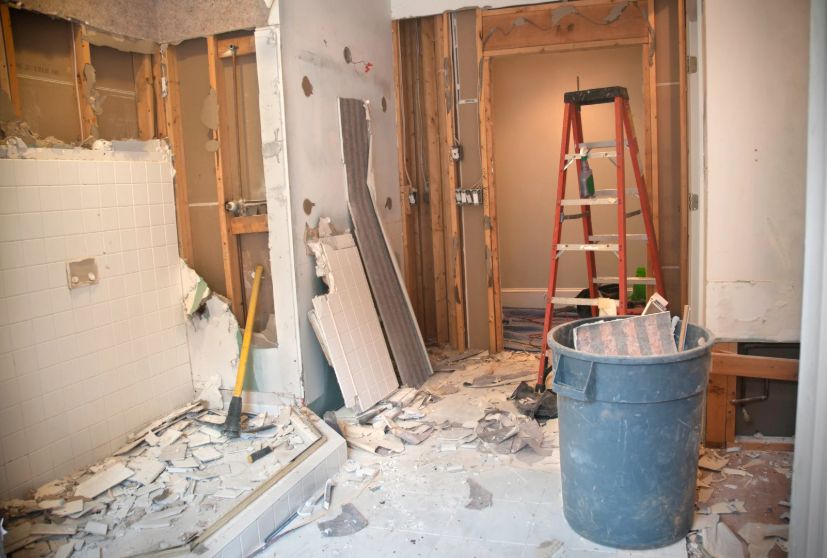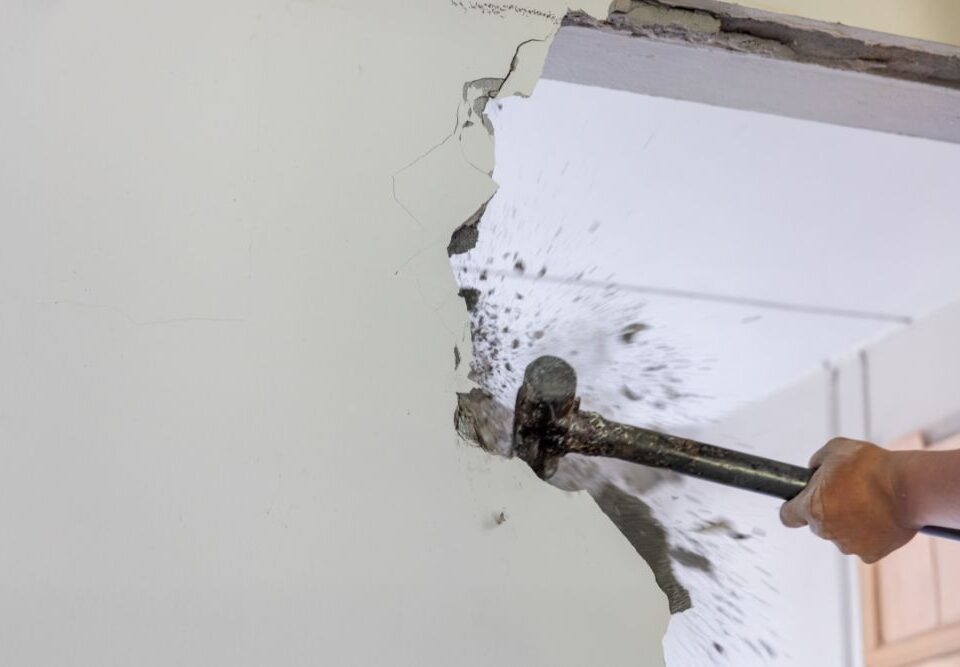
Flooring Removal Why It’s the Best Option for Your Home
August 29, 2025
The Environmental Benefits of Demolition Cleanup
September 1, 2025Tips for Concrete Removal Without Damaging Your Property
Choose the Right Tools for the Job
Concrete removal can quickly become overwhelming if you don’t have the proper tools and equipment. Using heavy machinery or power tools may seem like the fastest approach, but it can also pose a serious risk to your property if not handled correctly. Opt for specialized equipment designed for controlled demolition, and ensure that you are using protective gear to prevent injury. Hand tools like sledgehammers, chisels, and pry bars can be surprisingly effective for small sections, giving you more control over the process. Carefully assess the surrounding area before beginning, identifying any fragile structures or landscaping features that might be vulnerable during removal. Taking the time to plan your approach minimizes unexpected damage and keeps your project running smoothly.
Slow and methodical work is far better than rushing through concrete removal. Start by creating a clear path for debris to exit the site, ensuring no landscaping or structures are in the way. Break the concrete into manageable sections rather than attempting to remove large slabs all at once. Protect nearby surfaces by using thick plywood or other barriers to prevent scratches or accidental cracks. By pacing your work and carefully controlling each break, you reduce the likelihood of costly repairs and preserve your property’s integrity while making progress efficiently.
Protect Surrounding Areas with Barriers
When dealing with concrete, debris can fly or scatter unexpectedly, causing damage to nearby surfaces. Protect your property by covering delicate areas with heavy-duty tarps, plywood, or foam padding. Driveways, gardens, and walkways should be shielded from flying fragments. This preparation allows you to work more freely without worrying about harming surfaces or features that are difficult to replace. Taking preventive steps may seem time-consuming at first but will save both money and frustration in the long run. It’s also helpful to mark off a clear boundary around the work zone to keep pets, children, and bystanders safe during demolition.
Careful placement of barriers ensures that debris stays contained while providing a visual guide for where work should occur. Reinforce vulnerable edges with extra protection, especially if using power tools that generate forceful impacts. Planning the layout of protective materials before starting reduces interruptions during the removal process. By thinking ahead and dedicating attention to safety and preservation, you create a controlled demolition environment that minimizes property damage while keeping the project on track.
Break Concrete Into Manageable Sections
One of the most effective ways to prevent accidental damage is to divide large concrete surfaces into smaller, manageable pieces. Attempting to remove a massive slab in one piece increases the chance of uncontrolled cracks and can put surrounding structures at risk. Start by scoring or chipping along predetermined lines to create smaller sections, making it easier to lift and transport debris safely. Use wedges or prying tools to gradually lift concrete fragments without applying excessive force that could shift the surrounding ground or damage adjacent surfaces. Controlled segmentation reduces strain and allows you to maintain a clean, safe work area throughout the process.
Smaller sections also make disposal more efficient, as the debris can be stacked and removed incrementally. This method reduces fatigue and prevents sudden slips or breaks that could harm property or workers. By approaching the task with a strategic mindset and breaking down concrete into digestible portions, you maintain control over every step. Attention to detail during segmentation ensures that the demolition process is both safe and effective, resulting in a tidy site with minimal collateral damage.
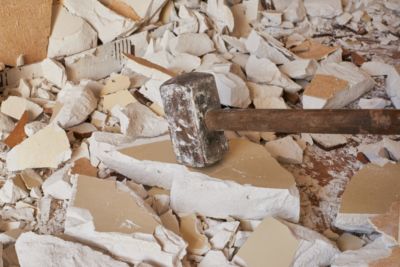
Start from the Edges
Concrete slabs often hold tightly to their foundations, making the edges the ideal starting point for removal. Beginning at the perimeter allows you to gradually work inward, reducing the risk of uncontrolled cracking or shifting that could damage nearby structures. Loosen the edges with a chisel or pry bar, and lift small sections first to gauge the effort needed for the interior. This method also gives you a clearer view of how the slab interacts with surrounding surfaces, helping you anticipate potential hazards. By respecting the natural boundaries of the concrete, you maintain a higher level of control throughout the removal process.
Working from the edges also helps in protecting landscaping and adjacent features. You can place protective barriers along the perimeter before the slab is disturbed, ensuring debris stays contained. Observing how the slab reacts as you remove sections informs your approach and prevents sudden breaks that could lead to property damage. This edge-first strategy allows for careful progression, balancing efficiency with caution for a smooth, safe concrete removal project.
Use Proper Lifting Techniques
Lifting heavy concrete pieces improperly is a leading cause of property damage and personal injury. Always use proper lifting techniques, including bending at the knees, keeping your back straight, and lifting with your legs rather than your back. Consider teaming up with a partner or employing mechanical aids like dollies, hoists, or winches for larger slabs. Controlled lifting ensures that concrete fragments do not slip, fall, or collide with surrounding structures. Prioritizing safe handling protects both workers and property, making the entire demolition more predictable and less risky.
In addition, keeping a consistent pace during lifting prevents sudden accidents. Avoid rushing, especially when maneuvering pieces through narrow spaces or around delicate surfaces. If mechanical aids are used, double-check that equipment is stable and capable of supporting the load. Maintaining awareness of your surroundings and the weight distribution of concrete segments minimizes the chance of unexpected impacts. Proper lifting not only safeguards property but also promotes efficiency and reduces the physical strain on workers.
Plan for Debris Removal and Disposal
Efficient debris removal is a crucial part of protecting your property during concrete demolition. Piled-up debris can create hazards, including accidental trips or falling slabs. Designate a clear path for moving fragments away from sensitive areas, and use containers or wheelbarrows to transport debris incrementally. Consider renting a dumpster or scheduling professional pickup to manage waste efficiently. Proper planning reduces clutter on the worksite, allowing demolition to proceed smoothly while keeping landscaping, structures, and walkways intact.
Strategic debris management also prevents accidental damage from heavy fragments being dropped or shifted. Organize work into cycles of breaking, lifting, and transporting sections to maintain a controlled workflow. By thinking ahead about disposal, you preserve both safety and property aesthetics. A systematic approach to debris removal not only protects your investment but also makes the project feel less chaotic, keeping focus on safe, effective concrete removal.
Protect Underground Utilities
Before breaking any concrete, it’s vital to know the location of underground utilities. Hitting water, gas, or electrical lines can cause severe property damage and endanger lives. Call local utility companies or consult property plans to identify buried lines and mark them clearly. Avoid using heavy tools directly above these areas and take extra precautions when working nearby. Awareness and careful planning around utilities prevent unnecessary disruption and preserve property value during demolition.
Once utilities are marked, maintain a buffer zone around them. Use hand tools or controlled techniques to avoid accidental penetration or vibration that could affect pipes or cables. Educating all workers about utility locations ensures everyone on site is mindful of potential hazards. Respecting underground infrastructure minimizes risks, creating a safer demolition environment and protecting your property from unexpected, costly accidents.
Wear Protective Gear and Safety Equipment
Safety is paramount during concrete removal, and wearing appropriate protective gear is critical. Hard hats, gloves, steel-toed boots, eye protection, and ear protection help reduce injuries from flying debris, sharp edges, and loud equipment. Even small fragments can cause serious damage to property or personal health if ignored. Protective equipment ensures that the demolition process is not only safe for workers but also controlled, preventing accidents that could impact surrounding surfaces or structures.
Proper gear also allows workers to focus on precision and technique rather than worrying about hazards. With everyone fully equipped, you can confidently break, lift, and transport concrete while minimizing mistakes. Safety-conscious demolition contributes to protecting property while keeping the project efficient and orderly, resulting in a cleaner, damage-free environment.
Monitor Weather Conditions
Weather can greatly affect concrete removal and property safety. Rain, snow, or freezing temperatures can make surfaces slippery and increase the likelihood of accidental slips, falls, or misplacement of heavy slabs. Choose dry, stable conditions for demolition work to reduce risk. If conditions change suddenly, pause the project and secure all tools and debris. Planning around weather not only protects workers but also safeguards landscaping, nearby structures, and fragile surfaces from unexpected damage.
Additionally, strong winds can scatter debris and make protective measures less effective. Monitor forecasts closely and prepare accordingly with extra barriers or temporary shelters. Taking weather into account allows for a controlled environment and reduces surprises during concrete removal. By prioritizing timing and environmental factors, you maintain both safety and property integrity, ensuring a smooth, uninterrupted demolition process.
Work with Professionals if Necessary
Sometimes DIY removal is not the best approach, particularly for large or complex concrete projects. Professional demolition services have the experience, tools, and techniques to remove concrete safely without damaging property. Hiring experts can prevent costly mistakes and protect your home, landscaping, and nearby structures. Professionals also handle debris disposal efficiently, ensuring that your site remains clean and hazard-free throughout the project. Relying on skilled crews allows for a smoother process and peace of mind knowing that property is safeguarded.
Even if you start the project yourself, consulting professionals for advice or partial assistance can enhance safety and efficiency. They can identify potential pitfalls, suggest equipment, and offer strategies that minimize the risk of property damage. Combining personal effort with professional guidance ensures that concrete removal is completed safely, effectively, and with minimal stress.
Conclusion
Successfully removing concrete without damaging your property requires careful planning, attention to detail, and the right techniques. From selecting appropriate tools to protecting surrounding areas and monitoring weather conditions, every step plays a critical role in maintaining the integrity of your home and landscape. By breaking concrete into manageable sections, using proper lifting methods, and keeping debris organized, you can minimize risks and ensure a controlled demolition environment. Prioritizing safety and precision allows you to tackle concrete removal effectively while preserving your property’s value and appearance.
For those seeking an efficient, stress-free solution, North Bay Junk Removal in Santa Rosa, CA offers professional junk removal services that handle concrete and construction debris safely. Their experienced team is equipped to manage all aspects of removal while protecting your property. Whether it’s residential or commercial projects, their commitment to careful handling ensures a smooth process from start to finish. Reach out to North Bay Junk Removal at 707-478-6817 for expert assistance and reliable junk removal services that put your property’s safety first.

